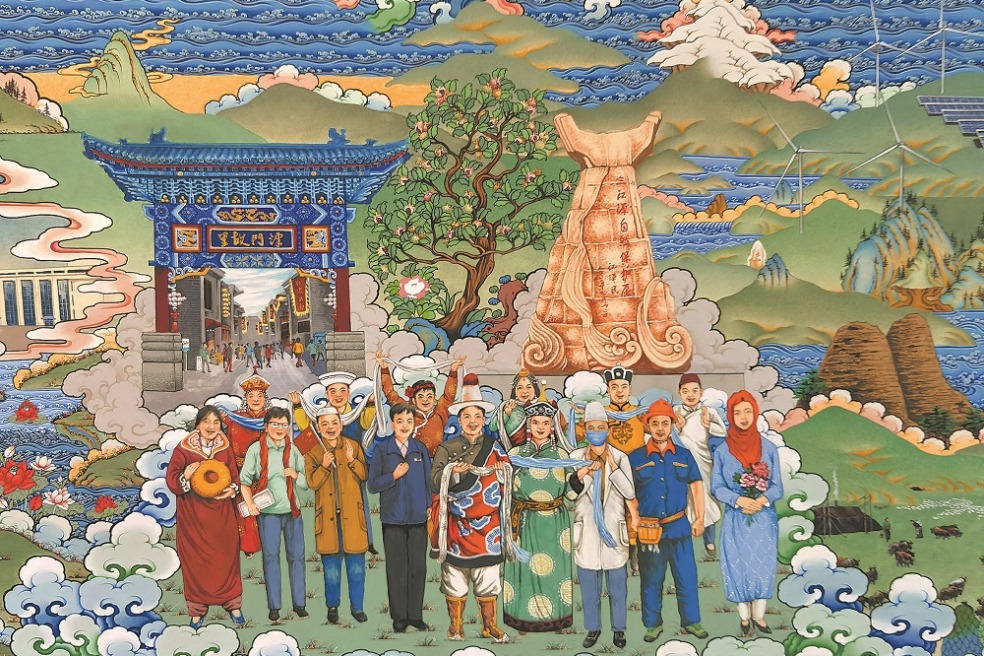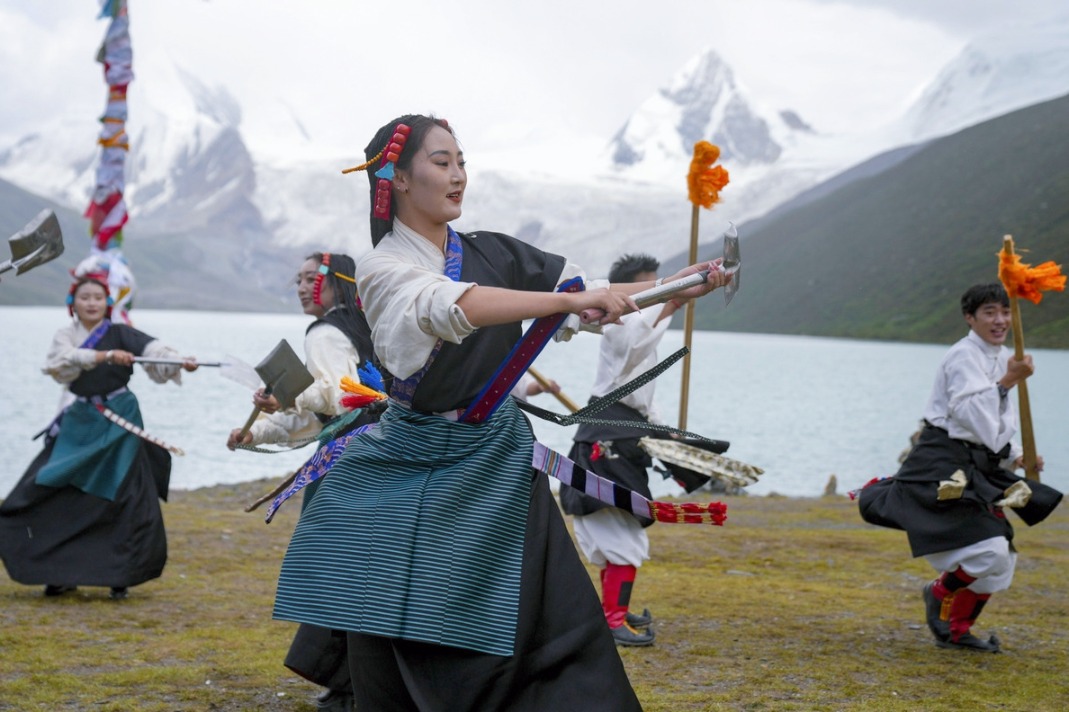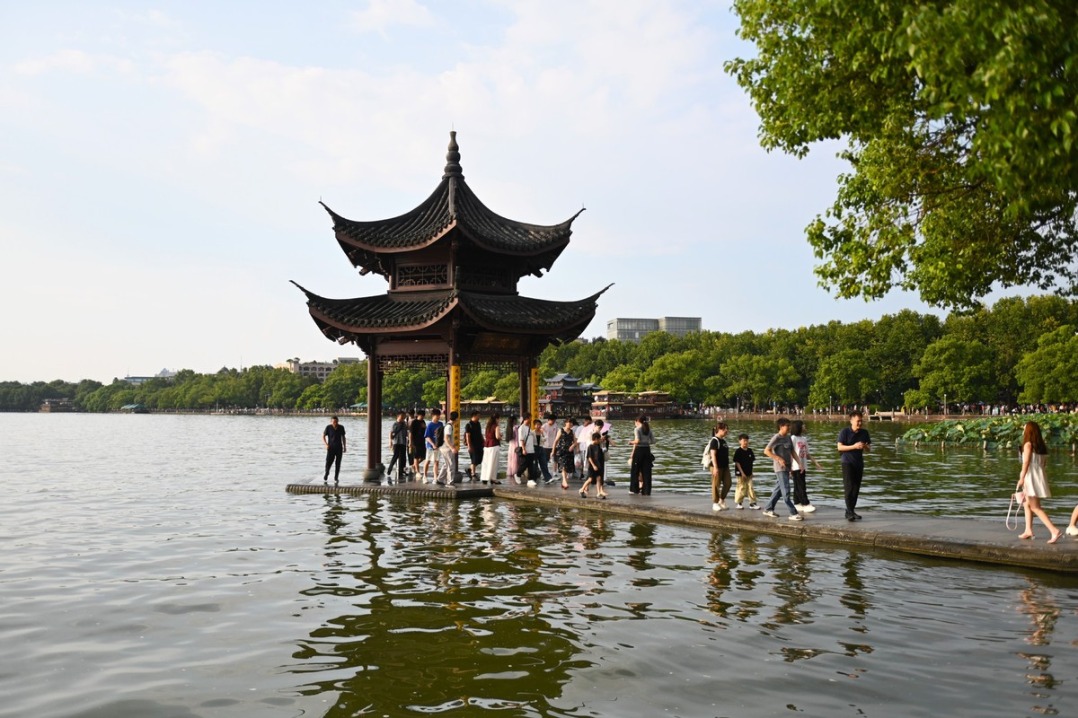Qinghai rides carpets, culture to new prosperity
From Thangka paintings to quality rugs, province is leveraging its heritage, history


Youthful innovation
Tongren city in the Huangnan Tibetan autonomous prefecture, 160 km southeast of Xining, is known as the "Hometown of Regong Art".
Encompassing Thangka painting, murals, clay sculpture, and other aspects, Regong art was inscribed on China's national intangible heritage list in 2006.
Thangka, an iconic Regong art form, uses mineral pigments like cinnabar and coral, painted on cotton cloth and mounted on silk. Traditionally depicting Tibetan Buddhist stories and history, often with peony motifs, modern Thangkas now incorporate landscapes, architecture, and daily life, with innovative techniques.
Dorje Tsering, office director of Renjun Regong Art Training Institute, said its founder Xiawujiao, as a master inheritor, has trained over 560 Thangka artists from Tibetan, Tu, Han, and Mongolian backgrounds.
The institute currently has 43 students and offers them free training and accommodation. It also houses Qinghai's first private Regong art museum. Built between 2009 and 2013 with a 10 million yuan investment, it draws visitors from around the world every year.
In its Thangka studio, two large works stand out.
"They were created to mark 15 years of Tianjin's aid to Qinghai, and timed for 2025. Each is 2.5m long and 1.5m wide," Dorje said.
One of them depicts landmark landscapes and buildings, including Tianjin's Panshan Mountain and Qinghai's Sanjiangyuan National Park, as well as scenes of Tianjin's educational and medical assistance to Qinghai. The other one shows the sister regions of Qinghai's Huangnan Tibetan autonomous prefecture and Tianjin's Binhai New Area and their natural and cultural landmarks.
Over 10 artists have worked on them for seven months, with completion scheduled for late August, Dorje said.
"Compared with traditional Thangka, this more modern style allows for greater freedom of expression," said 23-year-old Gatso while concentrating on painting one of the Thangkas. "I have been studying here for just two years and hope to be recognized by my teacher as soon as possible."
He is from the Hainan Tibetan autonomous prefecture. After graduating from high school, he stayed at home for a few years. When he heard that there were free learning opportunities at the institute, he went there.
























